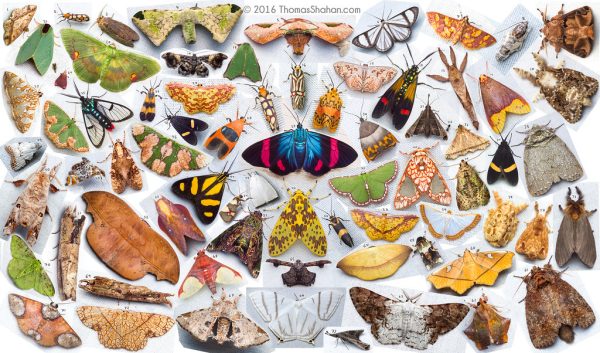Greetings, nature enthusiasts! Did you know there’s a whole week dedicated to those fluttering, nighttime wonders we call moths? That’s right! Welcome to National Moth Week, an invitation to delve into the fantastic world of these often underappreciated creatures of the night.
Moths belonging to the Lepidoptera family (the same one that embraces the ever-popular butterfly) are incredibly diverse. There are over 160,000 known species globally, each more fascinating than the last. From the bite-sized pigmy moth to the Atlas moth with a wingspan stretching up to a foot, there’s a stunning range to admire.
For those fond of daytime critters, did you know some moths don’t share the night owl preference? Certain species, like the hummingbird moth, flit around during the day, sipping nectar from blossoms with their long, straw-like tongues.
Let’s dispel a common myth about eating habits: all moths don’t munch on your clothes. Most adult moths don’t eat at all! It’s only a few species whose caterpillars, the larval stage, find woolens too tempting to resist. The majority prefer a diet of plant leaves, fruits, and seeds.
Moths are much more than just pretty wings and nocturnal whispers. These fluttery wonders are invaluable to our ecosystem. They serve as pollinators, with their fuzzy bodies designed to carry pollen from flower to flower. Think of them as night-shift workers keeping our gardens beautiful and our crops fruitful.
Furthermore, they’re a critical food source for various animals, from bats and owls to frogs and lizards. Even their caterpillars provide sustenance for many creatures. So, in celebrating moths, we also celebrate the intricate web of life they support.
Now, let’s talk about moth fashion, specifically, their dazzling array of patterns and colors. From the crimson underwing with its fiery red accents to the elegant, wood-like pattern of the peppered moth, there’s a whole spectrum of winged wonder to discover. These intricate designs are not just for show but crucial survival tools for camouflage and predator deterrence.
This National Moth Week, let’s transform our perception of these fascinating insects. Far from mere pests, they are essential ecological players with a captivating allure.
Getting involved in National Moth Week is as easy as turning on your porch light and observing the guests who drop by. You can also try setting up a simple moth trap – nothing more than a white sheet and a light. Document and share your discoveries with others, expanding our understanding of these winged wonders.
The celebration of National Moth Week is a call to marvel at nature’s unsung heroes, a tribute to the underappreciated and often unseen creatures of the night. So, let’s flip the switch, illuminating the darkness, and get to know our moth neighbors better.
Here’s to the mysterious world of moths – masters of disguise, pollinators of the night, and a testament to the splendid diversity of life on Earth. Happy moth-watching, folks!


